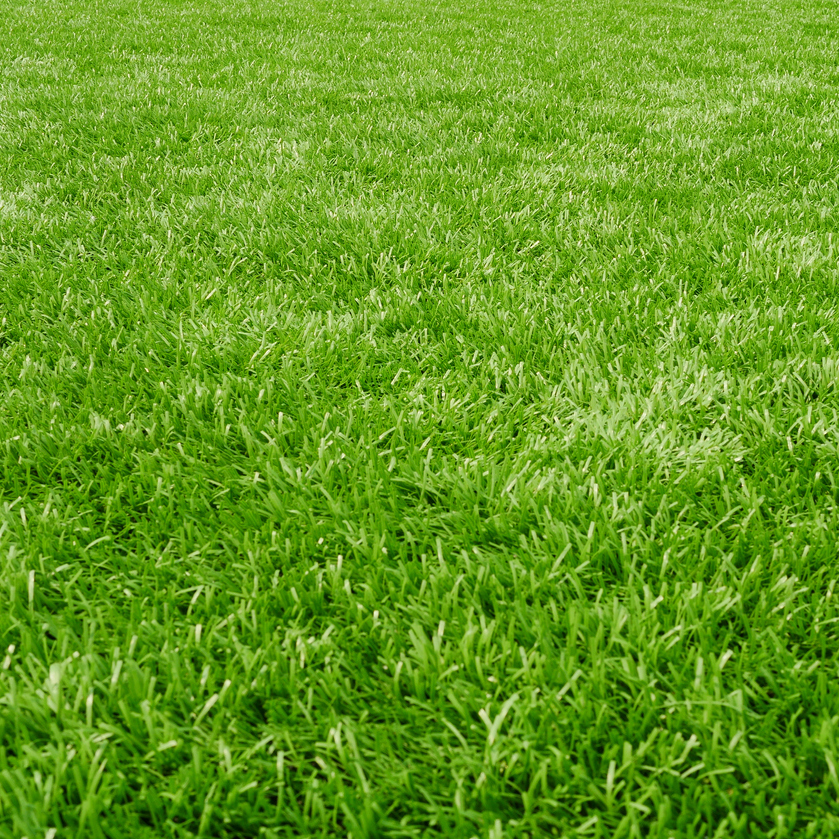The Perfect Grass
The rolling countryside of England, lush and green, is a picture-perfect ideal for countryside vistas. A place like Southampton, the first incorporated English settlement in New York State has its own version of a countryside blending beaches, sandy soil and farmland . Of course, the English climate with frequent rain is conducive to carefree green lawn maintenance. In Southampton, where the microclimate delivers mostly perfectly sunny beach days with only occasional rains during the summer, lawn maintenance may be more involved. To maintain a perfect lawn, many owners resort to heavy industrial fertilization and watering. Chemical treatment turns to toxic groundwater that enters drinking water, lakes and even the ocean, causing bad smell and even severe illness..
What’s worse, is that chemical treatment destroys the health of the soil in which the grass is planted and from which it derives nutrients. When the soil becomes unhealthy, the grass requires additional treatments leading to ever-complicated chemical dependency, further damaging the soil and the surrounding water and environment. However, natural alternatives to chemical applications allow the soil and the grass to stay healthy and flourish, even in the sunny Augusts.

The key to soil health, according to Roxanne Zimmer from the Cornell Cooperative Extension in Suffolk County, is the “FBI” trifecta of fungi, healthy bacteria and invertebrates. Mycorrhizal fungi growing on roots retain water and spur root development. Worms and other invertebrates not only help generate prime compost, but also aerate the soil, helping roots spread more easily. Warms ultimately increase the depth of topsoil by processing and multiplying organic matter. Healthy bacteria processes compost into prime grass food, full of nitrogen required for protein development.
While off-the-shelf nitrogen is used copiously, plants do not absorb it as well as the natural compost variety. As a result, the excess nitrogen once again ends up in groundwater, and then drinking water and the lakes where it drives the spread of the toxic algae. A natural alternative, of course, exists, and is called clover. Just 5% of clover in the composition of the lawn, according to Cornell research, gives the lawn 50% of the total nitrogen the lawn needs. The clover nitrogen is completely absorbed by the grass and delivers no harmful chemicals into the groundwater.
In addition to clover, grass clippings left in the lawn, mulched fall leaves and sprinkled compost also add the “clean” nitrogen and other vitamins necessary for the lawn’s healthy growth. Instead of bagging the grass clippings and hauling them away, leave them in the grass to add regular plant food for the remaining stalks and roots. In the fall, instead of blowing away the leaves, mow over the leaves to turn them into mulch. Within a week or two, the grass clippings and all the mulched leaves will be decomposed by worms, adding significant compost to the lawn.
Late August is the perfect time to fertilize the lawn with compost by sprinkling the grass with compost and raking it evenly afterward. The grass may look a little different for a week or two, but after three weeks it will absorb the compost and look lush and beautiful. And if you absolutely must use the off-the-shelf fertilizer, please select the no-phosphate organic fertilizer, as it is less likely to destroy all the fungi, bacteria and invertebrates in the soil.
In addition to fertilization, the perfect lawn requires a certain amount of acidity. Measured by a chemical unit of Ph, grass optimally grows in Ph range of 6.2-6.5. Soil tests are available at local stores like Fowler’s and Marder’s and at the Cornell Extension in Riverhead. For acidic soil with Ph greater than 6.5, a “correction” is affected by adding lyme in the Fall. Interestingly, trees prefer more acidic soil than grass, and do not appreciate lyme application. To make basic soil with Ph less than 6.2 more acidic, compost alone may be enough as compost has Ph of 7 and higher. In addition to Ph, calcium content in the soil also matters in one of the unexpected ways: calcium deficiency often manifests itself with a proliferation of dandelions!
The grass type, of course, makes a difference to create the perfect lawn. The Hamptons climate is considered to be cool relative to other parts of the country. Cool-climate grasses include fescue, rye, and Kentucky bluegrass. Kentucky bluegrass requires twice as much water and fertilizer as the fescues. Rye lasts about two to three seasons. While most grasses require at least 3 hours of sunlight every day, fine fescue tends to tolerate shade better than other varieties. Fine fescue, therefore, is one of the best-performing varieties in creation of the perfect lawn in the Hamptons.
The process of mowing itself makes a difference for what kind of lawn the grass forms. The taller the grass, the longer the root. During periods of drought, the shorter grass is more stressed when its correspondingly shorter roots are unable to reach wet soil. Mowing the grass taller promotes longer root development and often prevents the grass from browning during the peak of summer.
Another way to influence root development is watering. Watering a little on the regular basis causes the grass to develop shorter roots and more reliance on watering. In contrast, watering deeply, say for 1 hour or even 2 hours, but only once a week promotes longer root development and ultimately results in a more resilient lawn that stays gorgeous through the summer.
The health of the soil can be gauged by the number of worms slithering through top soil. The more worms, the healthier the soil. Still, even on healthy soil, bare areas may occur. To fix bare areas, in August, rake the area gently, sprinkle compost, sprinkle the grass seeds, and cover the area with burlap or some mesh-type of covering to prevent birds from picking the seeds. The new grass should appear the following year.
Surely not all the open areas in your garden require grass. Alternatives include attractive groundcovers, including pachysandra, ferns, periwinkle or ajuga for sunny areas. All-weather and deer-resistant groundcovers, as determined by Cornell, include plumbago, leadwort, liriope, lady’s mantle and purple coral bells. Coral bells are evergreen in mild winters in the Hamptons. In full sun, goldenrod, salvias and grasses such as Little Bluestem and Northern Dropseed thrive and add colorful variety. Sedums do a terrific job as groundcovers, but are delicious to deer. Aggressive plants like ivy are best avoided as they are likely to take over the neighboring plants and areas. Overall, groundcovers are low maintenance and make the garden more sustainable and attractive at the same time.

